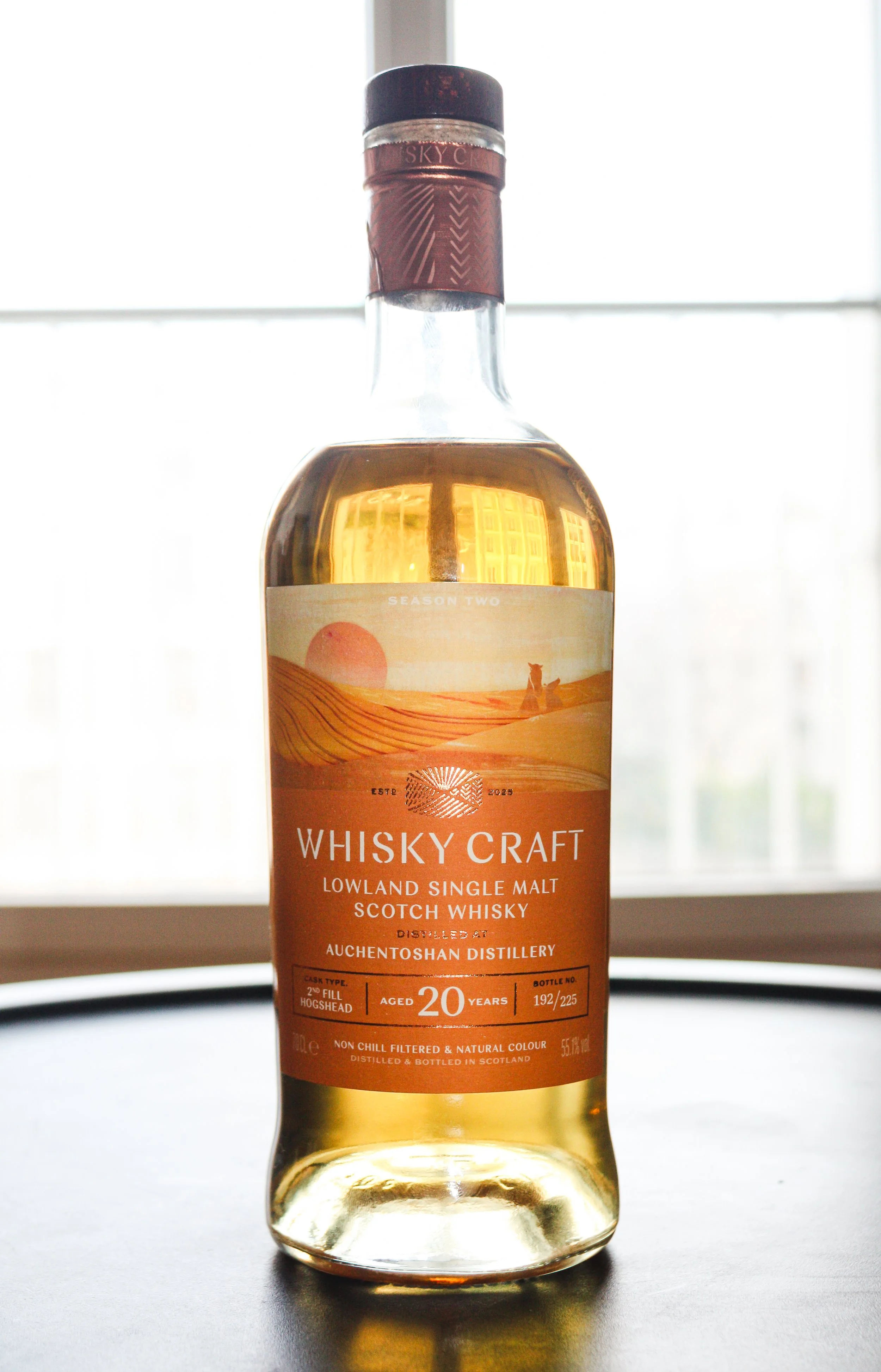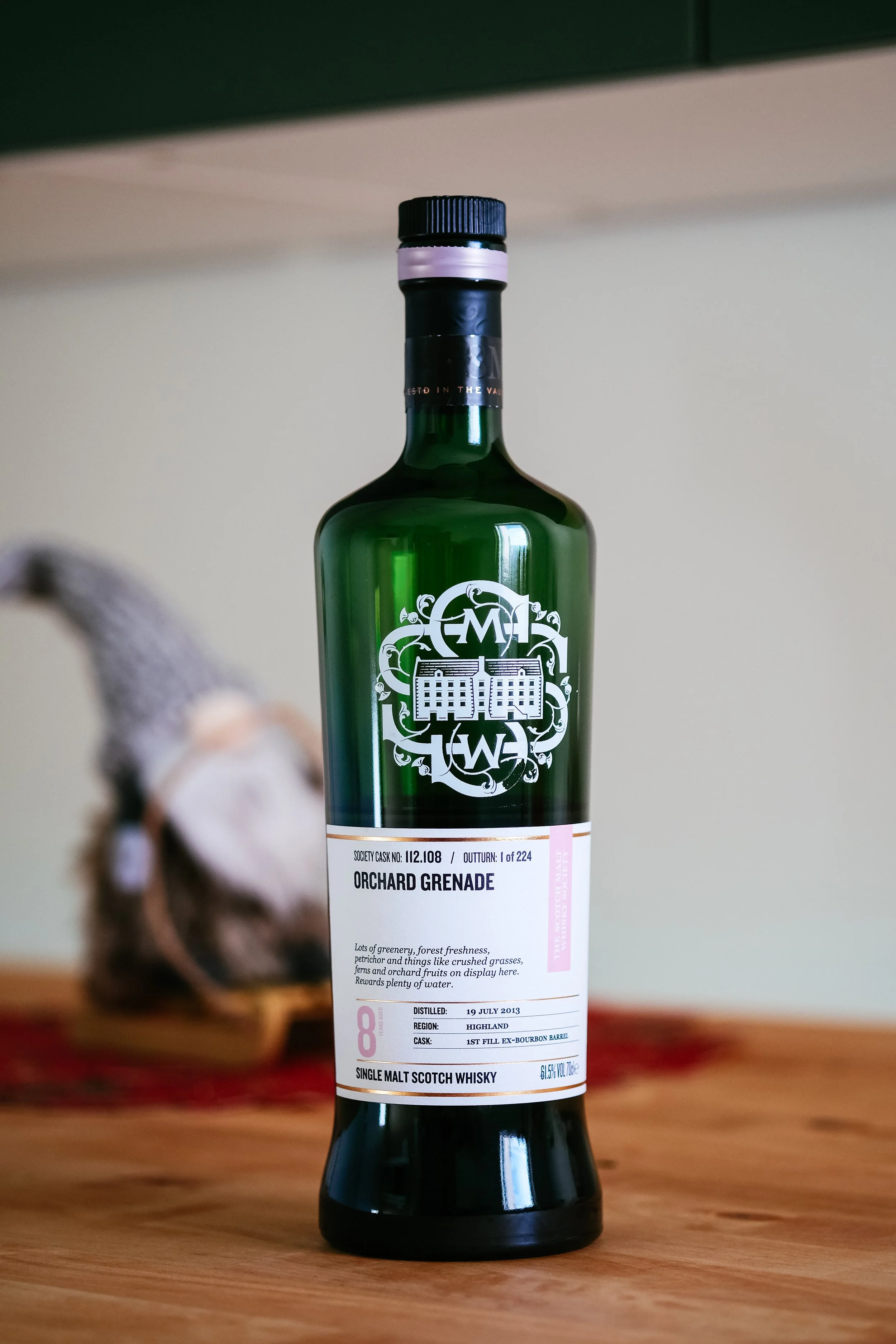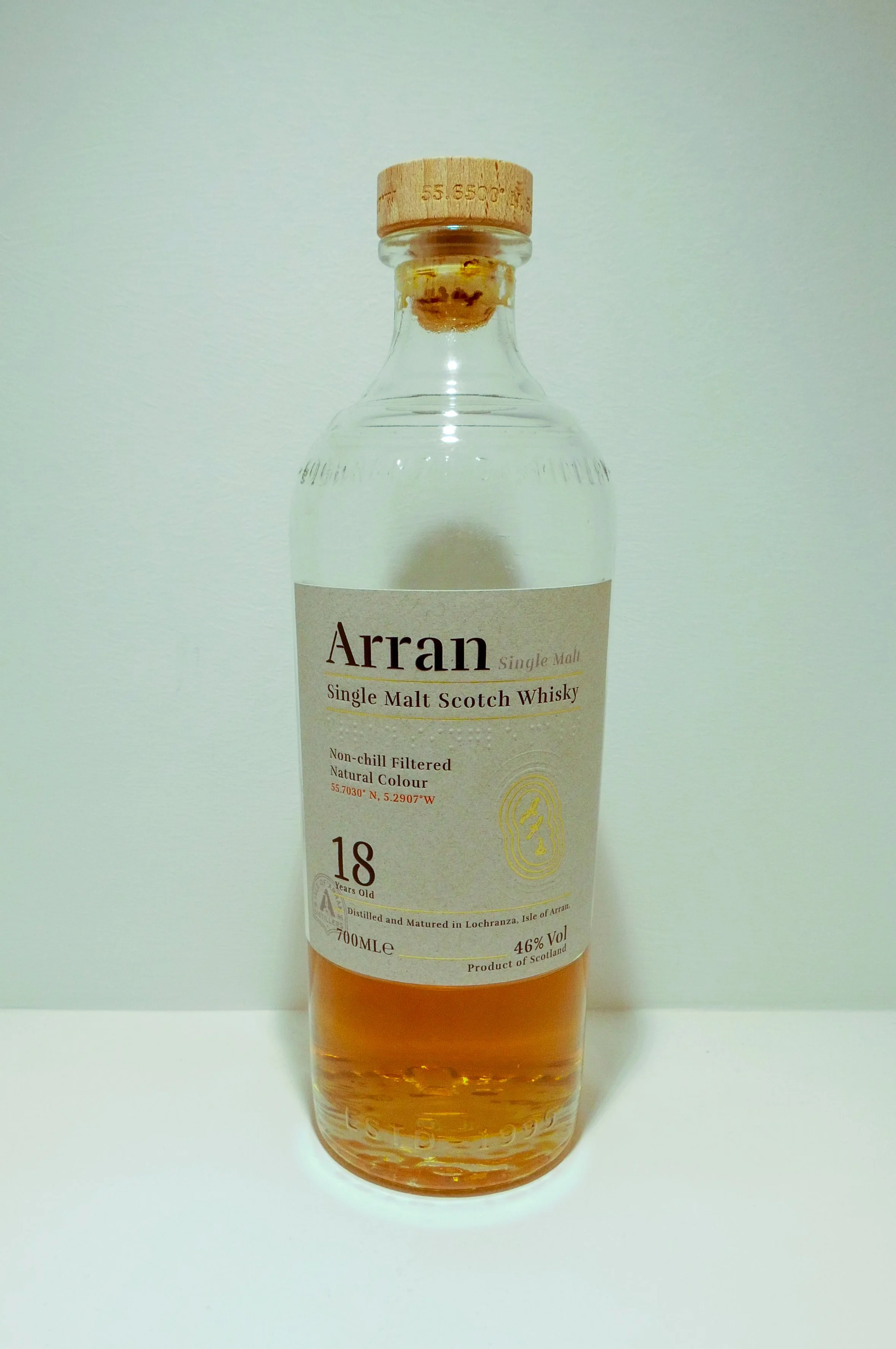Ohishi Brandy Cask
Japanese rice whisky | 41.8% ABV
Score: 5/10
Average. In a good way.
TL;DR
A step outside the barley box
Hello, my name is Broddy and I am a whisky adventurer
What is whisky? In the vast majority of cases, whisky is fermented and distilled from grains. Does that mean you should limit yourself to malted barley or even the snobbish single malts? For a whisky adventurer, thou shall not limit yourself to barley nor country of origin!
That’s not to say I don’t like whisky made from malted barley or Scotland. It’s my favourite whisky category and makes up nearly all of my modest whisky collection. But whisky globetrotting is a fun activity and something I recommend everyone should routinely do. It provides an excellent contrast to your favourite base grain or country of origin and more than likely will help you unlock some additional flavours in your favourite drams.
More than four years ago, I made a conscious decision to start chasing flavours. While some may choose to go vertically within the same distillery or region, I chose to cast my net wide. Scouring stores and taking a deeper interest in independent bottlers, I chased releases from distilleries I’d never heard of; Auchroisk, Millstone, Inchgower, Mackmyra, or Imperial? Sure, toss those in the cart. American, Canadian, Swedish, or Japanese? I’ll have some of those please. This scattergun approach led to wild flavour chases, and I found some golden liquids and, of course, stumbled upon some duds that didn’t fit with my preferences. That’s the name of the game for a whisky adventurer.
“If at first you don’t succeed, try, try again”
This chase led me to this Japanese whisky from Ohishi. The reason I purchased this bottle was simple: I’d never tried anything made from rice before. What would it be like? How would it compare to the malted barley whiskies I’m fond of? The whisky adventure was afoot!
Rice, like barley, wheat, and corn, is a grain and as such, can be legally defined as whisky. Growing up on a grain farm, I was quite familiar with the potential of the common grains in flavours and growing (and by association fermentation) steps. I had no idea that rice could be fermented and distilled as I’d always viewed it like cooking chicken: a good neutral base upon which you could add layers of flavours. I had to try it. Interestingly, distilled spirits made from rice cannot be labelled or sold as whisky within Japan but can be labelled as whisky upon export.
Well it turns out you can indeed ferment rice, and Ohishi employs a 504 hour fermentation. Yup, that’s not a typo and you read that right. More than 10 times the average Scottish malted barley fermentation time. Rather than plagiarise from the Ohishi website, I’ve provided their excellent process synopsis below:
Step 1: Making Koji Rice. Locally grown rice [gohyakumanishi rice - BB] is steamed and cooled after which white koji seed is added to help get the rice ready for fermentation. This process takes 40 hours.
Step 2: Primary Fermentation. The Koji Rice is then added to and ground in clay pots along with yeast and water. This primary fermentation process lasts for seven days and will be the backbone of the larger fermentation run.
Step 3: Secondary Fermentation. More locally grown rice [typically mochi rice - BB] is steamed and cooled and is then added with the primary ferment and water into a larger [stainless steel - BB] fermentation tank where main fermentation will occur. This will last for 14 days and the final abv will be about 16-18%.
Step 4: Distillation. The wash is moved into a stainless steel pot still where it is distilled to average abv of 45%.
Step 5: Maturation. After distillation the distillate is then put into sherry or ex-brandy casks where it will be laid to rest for years in one of the Ohishi warehouses located by the distillery.
I had never heard of Koji rice until researching and writing this article. Koji rice is created by purposely adding a type of mould (white Koji seed) that’s common throughout Japan and letting the fermentation and moulding actions occur. While this might seem unhygienic, remember that many of our common foods are also control-moulded like some cheeses, so don’t be put off. In creating the Koji rice, the mould breaks down the starches and proteins into sugars and amino acids. Sounds just like malting barley doesn’t it?
After the initial fermentation is complete, the Koji rice acts like a sourdough starter to a larger vat of rice (Step 3), kicking off the breakdown of starches into sugars followed by a natural fermentation to produce alcohol. You can see why this takes 21 days to complete as no external fermenters are added (e.g., distiller's yeast).
No corks were harmed in the process of this review
It isn’t clear if it’s a single or double distillation but it is quite interesting that the initial wash has a high %ABV relative to malted barley (typically 8 %ABV) and that the average distillation alcohol content is much lower than the Scottish norm (67-72 %ABV). The stainless steel construction of the still is a deviation from the norm of other grains. I’ve read the efficiency (16-18 %ABV wort/wash) of rice and the rice grain itself results in a “clean spirit”, implying that any of the copper-distillate reactions required by other grains isn’t necessary. And if that isn’t interesting enough, all of the gohyakumanishi rice used to make the Koji rice - about 30% of the total mashbill - comes from Ohishi’s own fields and rather than relying on chemicals, they utilise koi carp fish to control the weeds in the paddy fields. All super cool stuff.
Sounds like quite the complex preparation process and interesting distillation compared to malted barley. Now for a simpler perspective, Jesse from Still It provided an excellent at-home experimental overview of fermenting and distilling rice. Employing some ‘magic’ yeast and fermenting for two weeks, skipping the creation of Koji rice, Jesse was able to distill a rice whisky that had some similar base flavours to the notes I detected, even in the raw white spirit or new make form at a very similar %ABV. Very cool.
Ohishi’s bottle presentation is super clean
Review
Ohishi Japanese rice whisky, official bottling, 41.8% ABV
CAD$80 /£50 lesser availability
I’ve been nursing this bottle for a long time. It was one of the first Japanese whiskies I’d ever bought and it was unique because of the rice grain it was created from. I kept it on my shelf to keep coming back to keep stretching my palate. I’ve been known to pour this whisky blind to friends just to watch the flash of surprise flit across their face when I inform them it’s made from rice and isn’t a Scotch. It’s a cool party trick that never gets old. It’s also noteworthy that according to the broader whisky naming conventions, this whisky could technically be considered a single grain whisky.
You could argue the Ohishi label design is more akin to a beer or wine bottle
In keeping with a very Japanese aesthetic, a simple brown glass bottle with a screw top cap is employed. Some may baulk at the packaging but the bottle and simple label are uniquely Japanese. I’ve found various Ohishi brandy cask releases across the internet, all with a similar ABV as mine, indicating this core-range release does have some batch variation. Perhaps this explains the hand-written ABV on my bottle.
Nose
Sharp red apple that some might think borders on acetone, a note I find common in some Japanese whiskies. As my palate has evolved, the acetone note has disappeared and the apple is at the forefront. If you’re picking up acetone, give your palate and this whisky some time on your shelf. You’ll find it much more enjoyable when you come back to it. It also helps to do some homework and smell pure acetone and understand that the notes coming from this whisky are not truly acetone at all, but a trick your mind plays when trying to associate a smell with something you have smelled before.
Right, so we have a red apple leading the charge. Following the apple notes, a fruit orchard in bloom and a light honey sweetness underpin the nose. Tiniest hint of raw almonds or walnuts. It’s more nose tingling than the ABV would suggest but it’s not off-putting. This whisky really benefits from time in the glass.
Palate
Significant tannic bite to your cheeks followed by a honey sweetness. Hint of vanilla and raw ginger. The walnuts are more at the forefront of the tastebud party, while the apple notes are reduced from the nose. A crisp red apple, hint of star anise, and white pepper tingle appears to linger on my tongue for a decent length of time.
The Dregs
The palate is more impressive than the nose, however simple the whisky may be. It has a unique balance, moving between tannic bite to lingering softness, bitter nutty notes to apple and honey sweetness, and a young smelling nose to a decently long-lingering on your tongue.
Perhaps the whisky being made from rice is a novelty but personally, Japan should be leveraging this unique grain and spirit further. It would help build the uniqueness and provenance of Japanese whisky with something uniquely Japanese in origin rather than making Scotch-a-like whiskies from malted barley. Barley grows incredibly well in Scotland, Ireland, and Canada, corn is a staple grain in the US for bourbon, and Japan and other asian countries can grow rice with ease. It’s a unique lever that I wish more Japanese distilleries would pull on more often.
My recommendation for you: move past the Scottish section in your local store and take a punt on something new and different. It might just surprise you.
Score: 5/10 BB
-
Dramface is free.
Its fierce independence and community-focused content is funded by that same community. We don’t do ads, sponsorships or paid-for content. If you like what we do you can support us by becoming a Dramface member for the price of a magazine.
However, if you’ve found a particular article valuable, you also have the option to make a direct donation to the writer, here: buy me a dram - you’d make their day. Thank you.
For more on Dramface and our funding read our about page here.


































